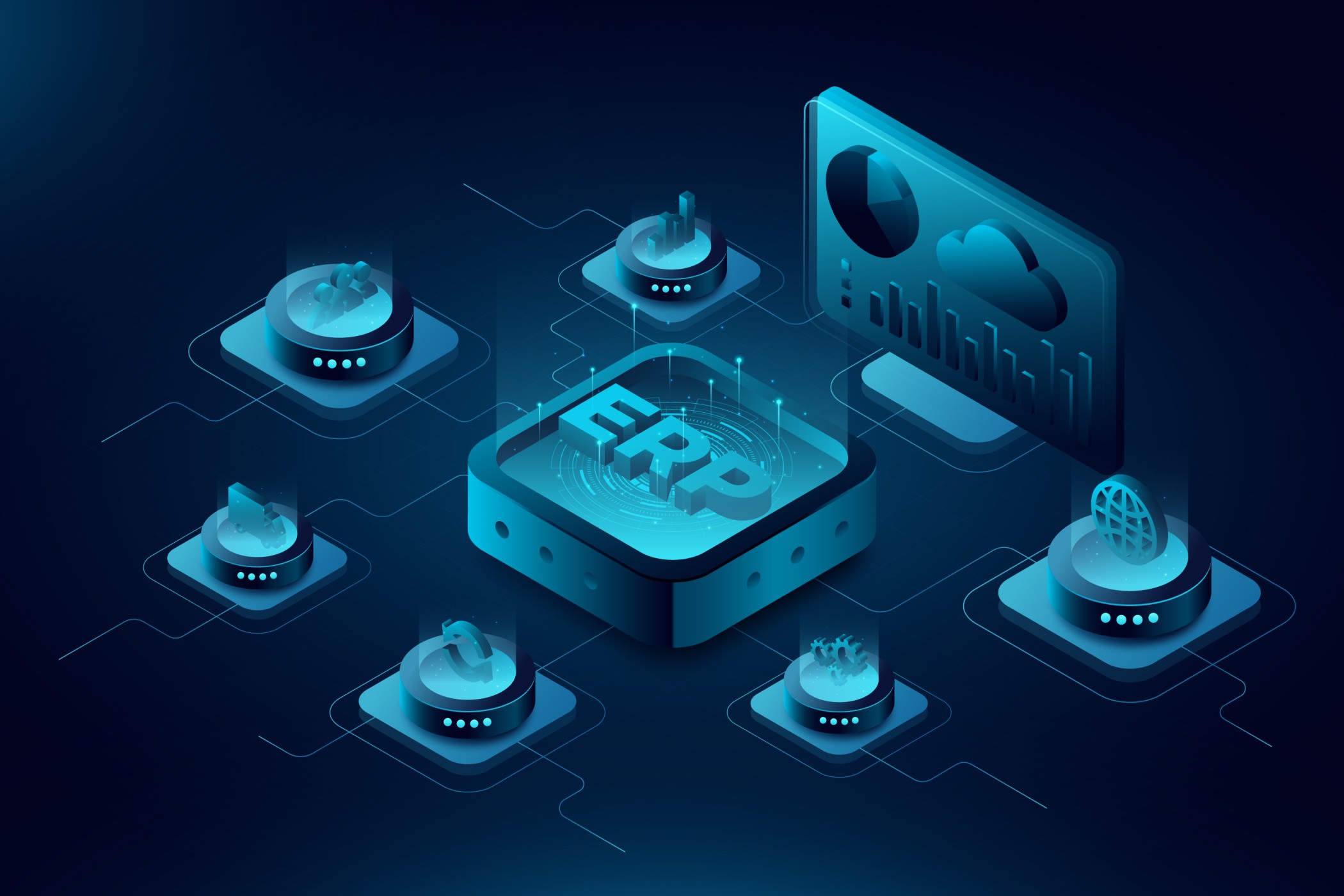TL;DR
ERP software has become essential for Sri Lankan businesses seeking efficiency and control. Prices vary widely depending on business size, number of users, customization, and deployment type (cloud vs on-premise).
Small businesses: From LKR 200,000/year, typically for basic cloud ERP modules.
Medium businesses: Around LKR 900,000–6,000,000, including licenses, setup, and training.
Large enterprises: LKR 50 million+, for full-scale, integrated solutions.
Hidden costs include customization, data migration, training, and maintenance.
Cloud ERP is gaining traction for affordability and flexibility, while on-premise may suit large firms with existing IT setups.
To choose wisely, identify your needs, compare vendors, set a realistic budget, and factor in long-term ownership costs.
With careful planning, ERP adoption can greatly improve efficiency, decision-making, and business growth in Sri Lanka.
ERP Pricing in Sri Lanka
ERP Software has become a necessity for any growing company in Sri Lanka. These tools are designed to help businesses consolidate all of their operations. You can manage from financials to customer management using one single platform. This increases productivity and improves control of processes.
In 2025, most of the companies in Sri Lanka have implemented ERP to be in the competition. But the question new business owners ask is “What is the market price for ERP in Sri Lanka?” The answer is not straightforward because the cost of ERP depends on the size of the company, the kind of ERP system, and the level of customisation it needs.
In this article, we discuss everything you need to know about ERP price in Sri Lanka. We’ll examine what affects its price, the average price bracket, hidden costs businesses ignore, and how to choose the right ERP system for you based on the budget you have.
Factors That Affect ERP Pricing in Sri Lanka
ERP price seems to be varying in Sri Lanka for many reasons. If you understand them, you can budget accordingly and avoid unpleasant surprises.
Business Size and Industry
The size of your company is one of the biggest factors that determine ERP cost.
- A tiny retail shop, in contrast, may only require basic modules such as inventory and sales that cost less.
- If it’s a medium-sized company, it might also need other modules such as HR, accounting, warehouse management, and CRM .
- Many large companies in sectors such as manufacturing or construction may require advanced features such as supply chain management, production planning, or analytics, which come at a higher cost
Number of Users
ERP systems are often priced based on the number of users who need access. For example:
- For instance, a cloud-based ERP would cost approximately LKR 8,000–60,000 per user per month.
- For on-premise ERP, a one-time license fee may be required, and its price may go up with additional users.
- There’s also a growing trend where companies like Acumatica and Blue Lotus 360 offer transaction volume–based pricing models, allowing businesses to have unlimited users. This approach empowers every team member to engage with the system, creating more data touchpoints and enabling smarter, data-driven decision-making.
So, if you have 100 people using the ERP, that cost will be higher than the case where only 10 people will require access.
Cloud vs On-Premise ERP
True Cloud-based ERP solutions are gaining popularity in Sri Lanka because of lower upfront costs. You pay a monthly subscription instead of buying the software outright.
- Cloud ERP: You don’t have to invest in servers or IT. It’s not too difficult to scale down or up, depending on the number of users.
- On-Premise ERP: The software license and the server computer have to be purchased upfront with a lot of money. But it could be more economical over the long haul for larger firms. But legacy systems can be hosted on cloud as well where they will incur an additional monthly subscription on associated licenses such as VPN Database etc.
Customization Requirements
ERP vendors usually offer standard modules, but most businesses need customization to match their specific workflows.
- Custom dashboards, extra reports, or software integrations all come at an additional price.
- Some organizations use nearly 30-50% of their ERP budget on customization/personalization.
Implementation and Training
Buying ERP software is only part of the cost. Implementing it involves data migration, system setup, and employee training. Vendors often charge separate fees for these services.
- A simple implementation for a small business might cost LKR 400,000–1,000,000.
- Medium or Large enterprises may spend several million rupees for a full-scale implementation.
Support and Maintenance
ERP systems require ongoing updates and bug fixes, as well as customer support. Some vendors also require an annual maintenance fee, which is typically 15-25% of the hardware/ software license cost. For true cloud SaaS ERP, standard support is typically included in the subscription.
ERP Price in Sri Lanka: Average Ranges
The cost of ERP in Sri Lanka can vary depending on the type of system and the vendor. Here is a general breakdown of ERP price in Sri Lanka:
Small Businesses
- Small business cloud ERP packages begin from 200,000 LKR per year. Some software offers top-notch features at pretty affordable prices. For example, Blue Lotus 360. It offers dedicated ERP software for Sri Lankan businesses.
- Some providers have flexible plans that let you pay for only the modules you need, such as accounting or inventory management.
- There are open source/free solutions as well, but they are difficult to use and have limited support.
Medium Businesses
- Medium-sized businesses with 10–30 users can expect to spend LKR 900,000 to 6,000,000.
- This includes licensing, basic customization, and initial training.
- Popular cloud ERP providers like Blue Lotus 360, Busy or Odoo , SAP B1, Oracle Netsuite, Acumatica offer packages that are well-suited for mid-sized companies.
Large Enterprises
- The big companies who need much more complex solutions, lots of integrations, and major customization are known to pay LKR 50 million upwards (or over).
- Enterprises tend to opt for vendors like SAP S4 Hana, IFS, Infor or Oracle Fusion.
Hidden Costs to Be Aware Of
When budgeting for an ERP, know that hidden costs exist. Many firms fail to plan for the expense and so overspend.
Customization Costs
While generic modules can accommodate some businesses, in the majority of cases, you need custom capabilities. These modifications add a nice chunk to the entire figure.
Hardware and IT Infrastructure
On-premise ERP requires servers, backup systems, and secure storage. This cost is separate from the software itself.
Data Migration
Transferring your data from your old systems to the ERP may take time and cost a lot of money. Vendors may charge per data volume or per hour.
Training
Your staff has to be able to effectively use your ERP. Basic training may be free, but the more specialized, advanced, or ongoing training does often cost extra.
Support Upgrades
Basic support is generally provided as a matter of course, but advanced support plans (e.g., round-the-clock support or a personal account manager) come with a charge.
Integration with Other Tools
If you are already using accounting software, e-commerce platform, or HR tool, integrating with your ERP could mean some more investment in terms of development.
How to Choose the Right ERP Within Your Budget?
Selecting an ERP system isn’t just about price; it’s about balance and industry specialization. Ideally, you want the most value and the most features for the cost-effective price over the long haul, normally a total cost of ownership calculated over a 5-year period. Here are some practical tips:
Identify Your Core Requirements
Make a list of must-have features. For example, if you run a retail business, inventory tracking and point-of-sale integration are critical. Avoid paying for unnecessary modules.
Set a Clear Budget
Decide how much you can spend annually, considering both upfront and ongoing costs like training, support, and upgrades.
Compare Products
Evaluate multiple ERP solutions side by side. Look beyond price, consider features, ease of use, integration capabilities, and scalability. Assess which products align with your business processes and long-term goals to ensure you invest in a system that delivers maximum value over time.
Compare Vendors
Different vendors have different pricing models. Compare at least three providers. Look at their reputation, customer reviews, and the quality of their support.
Check Cloud vs On-Premise Costs
If you do not want to invest in servers or IT infrastructure, cloud ERP is a better option. However, for larger companies with existing infrastructure, on-premise ERP may be cost-effective in the long run.
Look for Local Vendors
Some local ERP vendors in Sri Lanka offer competitive pricing and understand the local business environment better than international providers.
Plan for Growth
Choose an ERP that can scale with your business. A system that works for 10 users now should be able to expand to 50 users in the future without a complete overhaul.
Negotiate with Vendors
Vendors often have room for negotiation. Ask for discounts, especially if you commit to a multi-year contract.
Test Before You Buy
Ask for a free demo or trial version of the ERP. This will help you see if it meets your requirements before making a financial commitment.
ERP Price in Sri Lanka for 2025: Trends
ERP adoption in Sri Lanka is growing rapidly in 2025. Businesses are moving toward cloud-based solutions due to lower upfront costs and easier scalability.
- Subscription-based pricing is becoming more common, especially for small and medium-sized businesses.
- Vendors are offering modular pricing where businesses only pay for the modules they use.
- Local ERP providers are emerging with competitive prices and tailored solutions for industries like retail, manufacturing, and services.
Popular ERP solutions in Sri Lanka include traditional ERPs like SAP Business One, Busy, Tally and other true cloud-based products like bluelotus360, Oracle NetSuite, Odoo, and Microsoft Dynamics 365. Local companies also offer custom ERP systems at lower costs compared to global brands.
Conclusion
Investing in an ERP system is a big decision for any business.
Always consider hidden costs like data migration, training, and support. Take time to evaluate your needs, compare different vendors. It will help you to complete the ERP price in Sri Lanka.
A well-implemented ERP system can transform your business by improving efficiency, reducing errors, and providing real-time data for decision-making. With the right planning and careful vendor selection, you can find an ERP solution that fits both your business goals and your budget.














